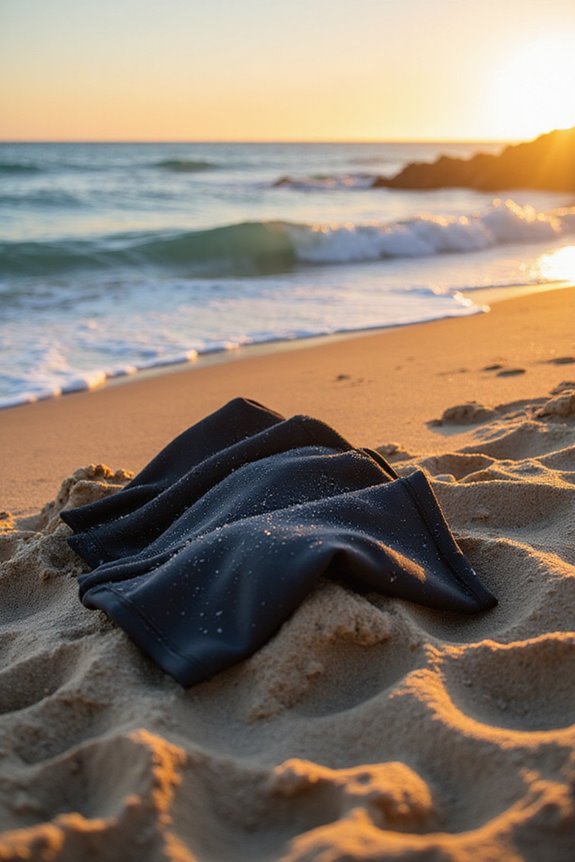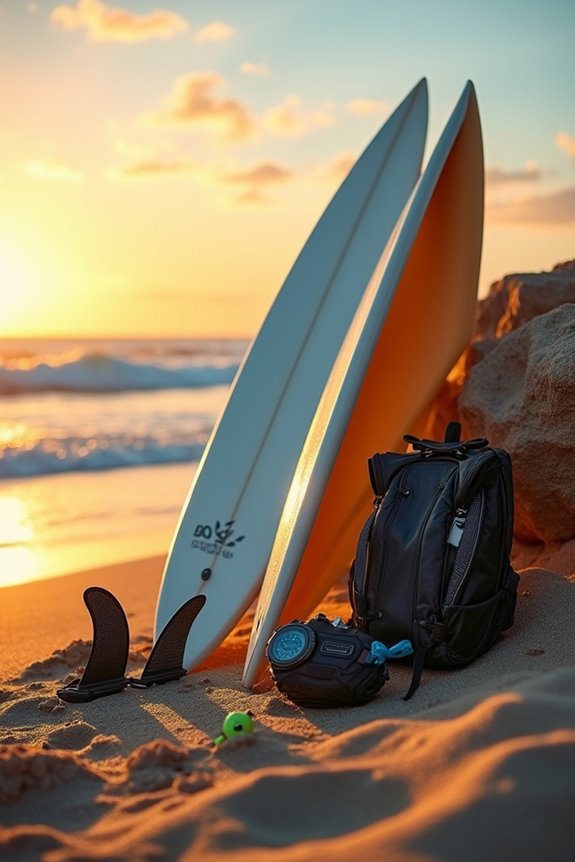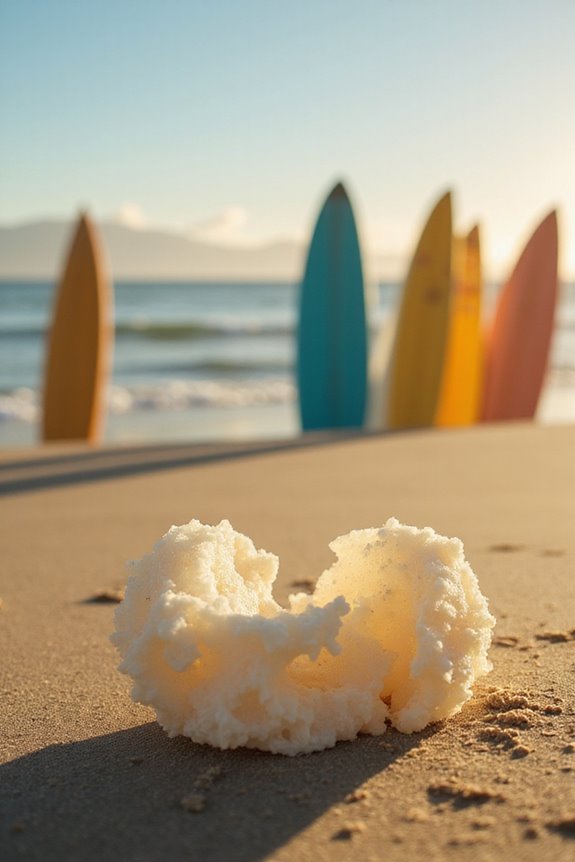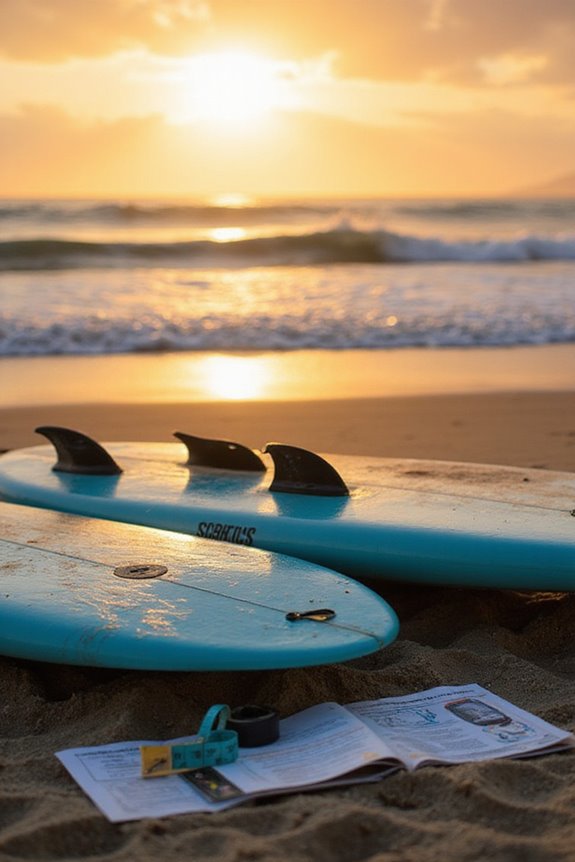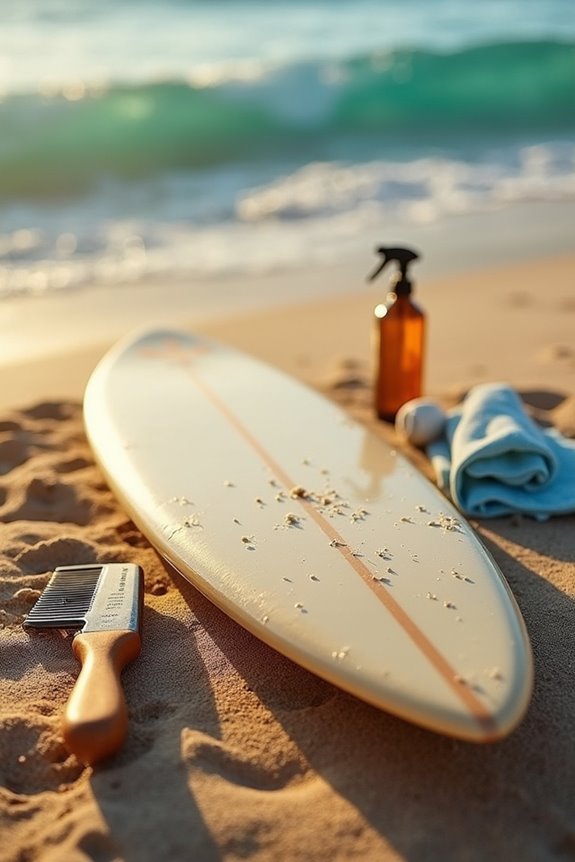To choose the right wetsuit thickness, we consider water temperature ranges. For temperatures above 24°C (75.2°F), a Lycra or rashguard suffices. In the 22°C to 24°C range, lightweight 1-2mm tops are suitable. For 19°C to 22°C, a 2mm shorty wetsuit works well. Cooler waters from 13°C to 18°C require 2mm to 3/2mm full suits, while 6°C to 11°C demands thicker full suits plus extra gear. Let’s explore more on how to match suits with seasons and activities.
Key Takeaways
- Determine water temperature: Above 24°C requires no wetsuit, while 13°C to 18°C typically needs a 3/2 mm or 4/3 mm wetsuit.
- Choose neoprene thickness: Thicker suits (4/3 mm or 5/4/3 mm) offer better insulation for colder conditions, but may limit flexibility.
- Consider activity intensity: Higher intensity activities might necessitate thinner wetsuits, while lower intensity may require thicker suits for warmth.
- Account for personal physiology: Individual factors like body fat percentage can influence how much insulation you need in your wetsuit.
- Evaluate seasonal changes: Spring and autumn temperatures can vary, so be prepared with appropriate thickness and optional accessories like gloves or hoods.
Understanding Water Temperature Ranges
When we consider the various water temperature ranges, it’s essential to understand how these temperatures influence the type of wetsuit we should wear. In waters above 24°C (75.2°F), we typically don’t need a wetsuit, opting for Lycra or rashguards instead. For temperatures between 22°C and 24°C (71.6°F – 75.2°F), lightweight 1 to 2mm neoprene tops are suitable.
As temperatures drop to 19°C to 22°C (66.2°F – 72°F), we can use 2mm shorty wetsuits. Cooler waters, ranging from 13°C to 18°C (55.4°F – 64.4°F), require 2mm to 3/2mm full suits. Very cold waters, around 6°C to 11°C (43°F – 52°F), necessitate thicker full suits and additional gear for warmth and protection. Choosing the right thickness is crucial for maintaining proper insulation during your water activities.
Choosing the Right Neoprene Thickness
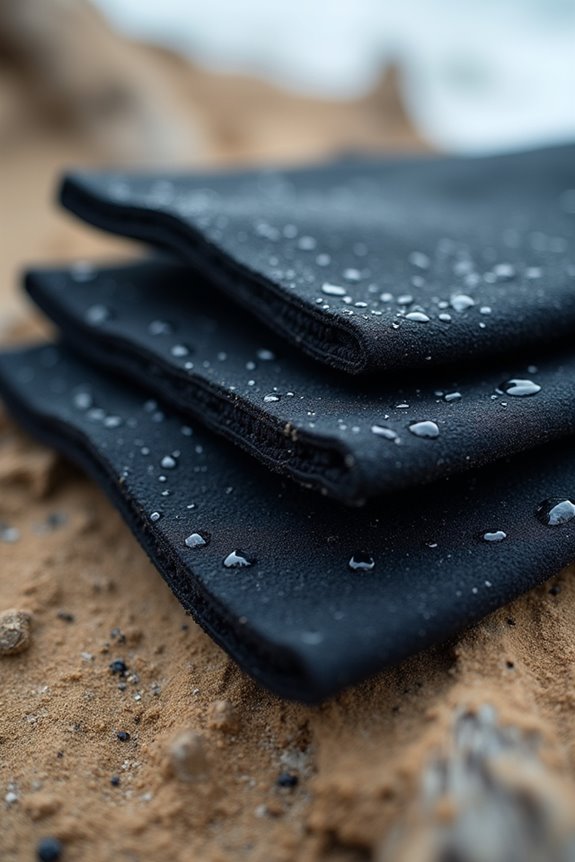
How do we determine the correct neoprene thickness for our wetsuit? The thickness of neoprene, measured in millimeters, varies across different areas of the suit to balance insulation and flexibility. For instance, a typical 3/2 mm wetsuit has 3 mm neoprene in the torso for warmth and 2 mm in the limbs for movement.
When selecting neoprene types, consider water temperatures and activities. Thicker neoprene provides better insulation but can limit flexibility. A 4/3 mm suit is suitable for cooler waters, while a 5/4/3 mm option offers significant warmth for cold conditions. By understanding these configurations and insulation materials, we can choose a wetsuit that meets our needs effectively. Additionally, the wetsuit thickness recommendations can guide us in making informed choices based on the specific water temperature we expect to encounter.
Seasonal Considerations for Wetsuit Use
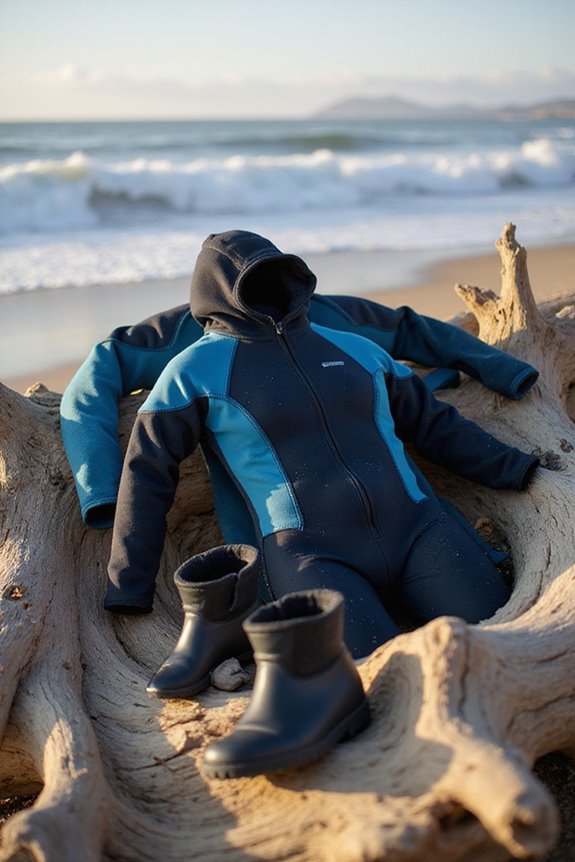
Seasonal considerations play a significant role in determining the right wetsuit thickness for our activities. In spring conditions, water temperatures typically range from 13°C to 18°C, so a 3/2 mm or 4/3 mm wetsuit is usually sufficient. We might also consider optional accessories like gloves or hoods, depending on the exact temperature and our activity level. As we move into autumn shifts, water temperatures can fluctuate, requiring us to stay attentive to changes. Thicker wetsuits might be necessary for late autumn, especially if we experience wind chill or colder currents. Choosing between flatlock and sealed seams can also enhance warmth, helping us stay comfortable during these transitional seasons. Additionally, understanding temperature range considerations is essential for selecting the most suitable wetsuit thickness.
Balancing Flexibility and Warmth

Balancing flexibility and warmth in wetsuit selection is essential for optimizing performance and comfort during water activities. Thicker neoprene provides improved insulation, but it can limit our movement. On the other hand, thinner wetsuits offer flexibility benefits, making them suitable for warm water, yet they provide minimal warmth.
For moderate temperatures, medium thickness suits (3-5mm) strike a balance between warmth and flexibility. A common strategy is to use thicker neoprene in the torso for warmth, while thinner panels on arms and legs enhance mobility. This split-thickness design helps reduce muscular fatigue and allows for better movement. Ultimately, we must consider water temperature and activity type to find the right balance between warmth trade-offs and flexibility needs. High-quality neoprene blends are crucial for achieving optimal stretchability and comfort.
Additional Factors for Selecting Wetsuit Thickness
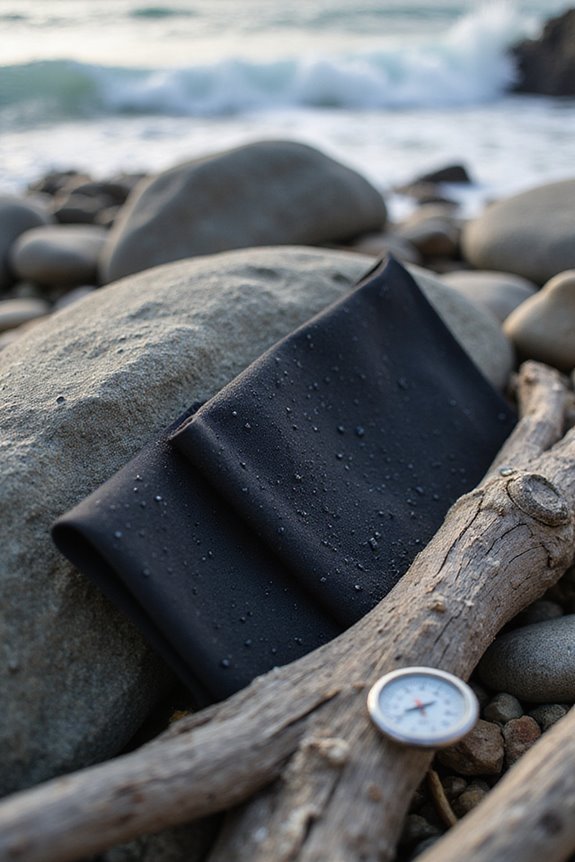
When choosing the right wetsuit thickness, we must consider several additional factors beyond just water temperature.
Activity Intensity
For high-intensity activities like surfing, thinner wetsuits can suffice since our bodies generate more heat. Conversely, during low-intensity activities like diving, thicker suits are preferable to combat heat loss.
Personal Physiology
Individual factors, such as body fat percentage and overall health, influence our insulation needs. Some may require thicker suits even in moderate temperatures.
Layering Options
Incorporating thinner base layers, vests, or accessories like hoods and gloves enhances warmth without adding bulk.
Suit Materials
Quality neoprene and construction also play a role in thermal protection, impacting our overall comfort and performance in varying conditions. Additionally, the thickness options include 3/2mm for moderate cold and 5/4mm for colder conditions, which can guide our selection.
Cold Water Gear and Seal Types
Understanding the right cold water gear and seal types is vital for maintaining warmth and comfort during aquatic activities. For effective thermal protection, we should consider gear types based on water temperatures.
In water below 14°C, a full wetsuit, along with boots, gloves, and hoods, is essential. Wetsuit thicknesses of 4/3 mm to 5/4/3 mm are recommended. Seals also play a key role in insulation.
- Flatlock seams are breathable but less waterproof.
- Sealed seams improve warmth by reducing water entry.
- Taped seams enhance insulation in thicker suits. A well-fitted wetsuit with chest zip design can significantly reduce cold water entry and enhance comfort during extended sessions.
For extreme cold, drysuits are necessary. By selecting the right combination of gear and seal types, we can guarantee our comfort and safety in cold water conditions.
Frequently Asked Questions
Can I Wear a Wetsuit for Swimming in a Pool?
Absolutely, we can wear a wetsuit for pool swimming! It offers benefits like protecting our skin from chlorine and providing warmth in cooler water, enhancing our comfort and performance during our training sessions.
How Do I Properly Care for My Wetsuit?
Caring for our wetsuit’s like nurturing a delicate flower. We should prioritize proper wetsuit cleaning and storage by rinsing it after use, avoiding harsh chemicals, and storing it folded in a cool, dark place.
What’S the Best Way to Put on a Wetsuit?
When putting on a wetsuit, we should guarantee proper wetsuit sizing and consider the materials. Starting from the legs, we gently pull it up, avoiding sharp movements to maintain the suit’s integrity and fit.
How Long Can I Stay in the Water With a Wetsuit?
When we swim in 50°F water, we can last about an hour with adequate wetsuit insulation. As water temperature rises, our time increases, but staying aware of our limits is essential for safety.
Can I Use a Wetsuit for Other Water Sports?
Absolutely, we can use a wetsuit across various water sports! It offers surfing benefits like flexibility and warmth, plus snorkeling advantages by keeping us insulated while exploring underwater, enhancing our overall experience in both activities.

